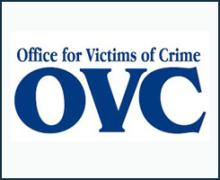Law enforcement
These resources may be able to help victims, their families, and the community, as well as the professionals and leaders that are assisting them during this difficult time.
2025 National Crime Victims’ Rights Week Resource Guide
Discover tools and sample materials to help you raise awareness about crime victims' rights and services.
Strengthening Tribal and Non-Tribal Collaboration To Address Elder Abuse in Tribal Communities
Elder Abuse Geriatrics: Describing an Important New Medical Specialist
Date Published
August 2024
Agencies
OVC-Sponsored
Publication Type
Research (Applied/Empirical)
Resources and Support for the Victims in Orlando, Florida
These resources may be able to help victims, their families, and the community, as well as the professionals and leaders that are assisting them during this difficult time.
What About Me? Finding Your Path Forward When Your Brother or Sister is Missing (Second Edition)
Date Published
January 2025
Agencies
OJJDP
Resources and Support for the Victims in Birmingham, Alabama
These resources may be able to help victims, their families, and the community, as well as the professionals and leaders that are assisting them during this difficult time.
Coordinated Strangulation Incident Response Training for Law Enforcement Officers and Emergency Medical Personnel Lesson Plan
Date Published
2024
Agencies
NIJ-Sponsored
Publication Type
Training (Aid/Material),
Instructional Material
Coordinated Strangulation Incident Response Training for Law Enforcement Officers and Emergency Medical Personnel
Date Published
2024
Agencies
NIJ-Sponsored
Publication Type
Instructional Material,
Research (Applied/Empirical)
Assessing the Impact of an Innovative Response to Intimate Partner Violence Related Strangulation, Final Report & Outcome Evaluation
Date Published
July 2024
Agencies
NIJ-Sponsored
Publication Type
Program/Project Evaluation
Resources and Support for the Victims in Winder, Georgia
These resources may be able to help victims, their families, and the community, as well as the professionals and leaders that are assisting them during this difficult time.
Anti-Trafficking Alliance Conference
Event Dates
–
Eastern
Location
The Ballantyne Hotel
Charlotte,
Event Type
Conference
Practices for Law Enforcement Interviews of Potential Human Trafficking Victims: A Scoping Review
Date Published
July 2024
Agencies
NIJ-Sponsored
Publication Type
Report (Study/Research),
Report (Grant Sponsored)
Resources and Support for the Victims in Butler, Pennsylvania
These resources may be able to help victims, their families, and the community, as well as the professionals and leaders that are assisting them during this difficult time.
Resources and Support for the Victims in Fordyce, Arkansas
These resources may be able to help victims, their families, and the community, as well as the professionals and leaders that are assisting them during this difficult time.
Resources and Support for the Victims in Rochester Hills, Michigan
These resources may be able to help victims, their families, and the community, as well as the professionals and leaders that are assisting them during this difficult time.
Resources and Support for the Victims in Round Rock, Texas
These resources may be able to help victims, their families, and the community, as well as the professionals and leaders that are assisting them during this difficult time.
Resources and Support for the Victims in Akron, Ohio
These resources may be able to help victims, their families, and the community, as well as the professionals and leaders that are assisting them during this difficult time.




